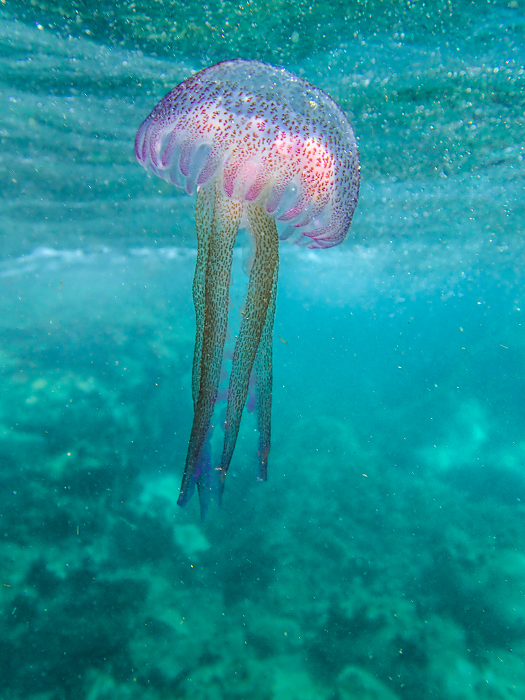NAPLES – Jellyfish are increasingly numerous in recent years in the Mediterranean Sea as in Italy on the Adriatic coast around Trieste or the coast of Amalfi, in Spain in the Balearic Islands and in France on the French Riviera. The summer of 2022 is particularly problematic in the Mediterranean with jellyfish blooms on some coasts. Jellyfish found in the Mediterranean are deadly for marine animals, but in the vast majority of cases harmless to humans. An update on the situation with a leading Italian jellyfish specialist who has conducted numerous studies, Ferdinando Boero. He teaches zoology at the University of Salento and is president of the Stazione Zoologica Anton Dohrn.
Xavier Gruffat (Creapharma.com) – Which species of jellyfish are most commonly found in the Mediterranean Sea, for example in Italy? Is it always Pelagia noctiluca and to a lesser extent Physalia physalis?
Ferdinando Boero – The main jellyfish are Pelagia noctiluca (but not in the Adriatic) whereas Rhizostoma pulmo and Cotylorhiza tuberculata are present along all coasts. Physalia enters from Gibraltar and can reach the western coasts of Italy, in particular Sicilian ones.
Is it correct to say that Pelagia noctiluca is the jellyfish species that leads most to symptoms (e.g. burns) for tourists on Italian beaches?
From a quantitative poin of view yes. The only casualty recorded in the Med from a gelatinous stinger was from Physalia physalis, in Sardinia. But the victim already had health problems.
What are the impacts and effects of ocean warming on jellyfish?
Ocean warming can widen the time window in which species with preferences for warm waters do reproduce. The increase in temperature in the Mediterranean favored the establishment of the invasive species Rhopilema nomadica in the Eastern Mediterranean.
To summarize, what are your different solutions to limit the number of jellyfish in the Mediterranean?
The jellyfish are filling the void left by the fish that we catch with industrial tools that are highly efficient. The adult fish are both predators and competitors with jellyfish, whereas the jellyfish are both predators and competitors with larval and juvenile fish. If you remove one of the two “actors” the other one prevail. A wider use of marine resources, with no depletion of fish populations, might lead to a more balanced functioning of ecosystems.
If a person has been stung by a jellyfish, what do you advise? Do you recommend applying vinegar to the burn or wound? It is said that one should also avoid applying fresh water…
No fresh water for sure, and then apply warm objects on the wounded area, since the poison is usually thermolabile. “Shave” the sting with a plastic object, such as a credit card, to remove the stinging cells. Do not rub the sting. Go to a doctor and try to realize what species stung you, take a picture. Not all stings are identical.
Are there any special precautions to be taken in case of multiple jellyfish stings? In other words, are there more risks with many stings on the body?
If you are stung do not start shaking your body like crazy. Be calm, and slowly swim to the coast, looking around so as to avoid other encounters. Of course multiple stings might have greater effect than single ones, as it happens with bees.
If you are in the Mediterranean, remember that there has been only one casualty from a jelly sting, in history! The chances that you are the second one are very remote.

Creapharma.com thanks Ferdinando Boero for his interview in English (later translated into other languages). It took place by email in July 2022. Final editing: Xavier Gruffat (pharmacist) and Seheno Razanamanga (journalist). Picture: Adobe Stock.
